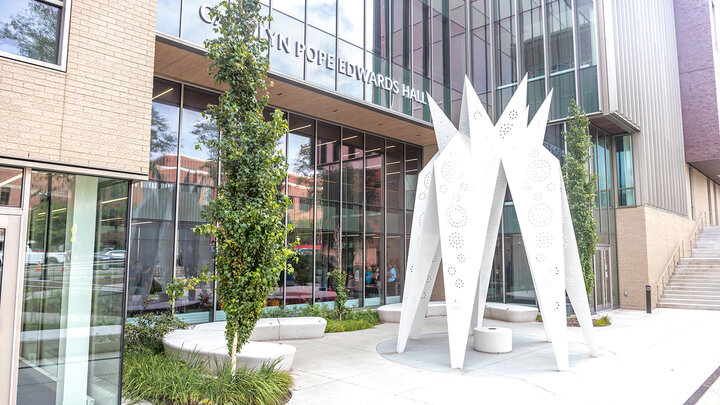A University of Nebraska–Lincoln research center with a unique strategy for fighting obesity and related diseases has received a third and final round of funding from the National Institutes of Health.
The Nebraska Center for the Prevention of Obesity Diseases through Dietary Molecules, or NPOD, received a five-year, $5,808,886 renewal from the NIH’s Centers of Biomedical Research Excellence Program, known as COBRE. The funding will support the center’s efforts to solidify its research base and prepare to thrive in the long term.
“Phase 3 is all about sustainability,” said Janos Zempleni, NPOD director and Willa Cather Professor of molecular nutrition. “We are putting the pieces into place that will enable the center to continue its work after the 15 years of NIH funding ends.”
Since its 2014 founding, NPOD has established itself as an internationally distinctive research hub. Among the many obesity-related research centers, NPOD sets itself apart with a focus on using bioactive compounds in foods to prevent, treat and cure obesity and related diseases like Type 2 diabetes, cardiovascular disease and non-alcoholic fatty liver disease. Bioactive compounds are types of chemicals found in small amounts in plants and certain foods like fruits, vegetables and nuts. Center researchers aim to use these naturally occurring compounds — such as choline, fiber and omega-3 fatty acids — to promote improved health.
The approach is both consumer friendly and economically feasible, enabling people to adjust their diets with little impact on taste. The strategy could be pivotal in fighting obesity, which affects roughly 40% of both Americans and Nebraskans.
It's been a successful niche: Over the past decade, the center has secured $200 million in external funding, which amounts to a nearly 36:1 return on investment for each dollar invested by the university. The number of center-affiliated researchers has increased from 12 faculty in 12 departments at UNL and the University of Nebraska Medical Center to 59 faculty in 26 departments at UNL, UNMC and the University of Nebraska at Omaha. Their work has resulted in more than 1,000 publications covering diverse topics, including:
- Obesity intervention studies in underserved populations in western Nebraska and in Native American communities.
- Extracellular vesicles’ role in human metabolism.
- The role of the microbiome in regulating metabolism.
- Lipid metabolism.
- Liver disease.
As NPOD’s focus shifts to sustainability, Zempleni will hire two additional faculty members to expand the center’s research portfolio. He will also prepare select NPOD researchers for eventual leadership of the center, ensuring a smooth line of succession in the future. The center’s pilot grant program will focus on positioning faculty to secure large-scale federal funding, which could help fund NPOD operations.
Another goal is to grow the momentum of the Biomedical and Obesity Research Core, which provides state-of-the-art equipment and services for obesity and bioactive compound research. The core, which NPOD launched in 2014, is already nearly self-sustaining. Zempleni will extend that trajectory by further aligning the core’s services with user needs and attracting more users, both internal and external.
To position NPOD for future external funding — possibly through NIH’s Nutrition Obesity Research Centers program — center researchers are working to strengthen ties with colleagues in the region.
Zempleni said NPOD’s long-term presence in Nebraska would benefit the state in multiple ways. For one, the center’s focus on bioactive food compounds dovetails with another of Nebraska’s research strengths, presenting opportunities for collaboration.
“With Nebraska being an ag state, it’s the perfect home for this focus,” he said.
Beyond the research, the center fuels the state’s economy. As the number of NPOD researchers has increased, so too has the number of technicians, postdoctoral researchers and students who reside in Nebraska. Giving students a first-hand view of the center’s cutting-edge research also may combat brain drain from the state.
“It’s a training ground for young students, even high schoolers, who might decide to stay in Nebraska because there is a lot of great science going on at UNL and also at UNMC, our partner institution,” Zempleni said.
College of Education and Human Sciences
Nutrition and Health Sciences
Comprehensive Health & Well-Being




